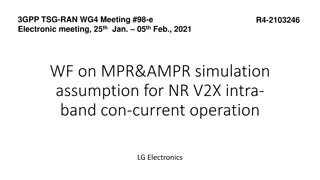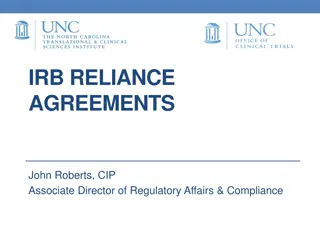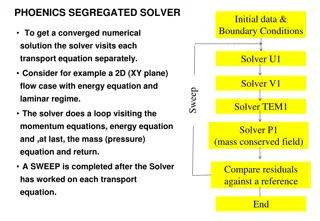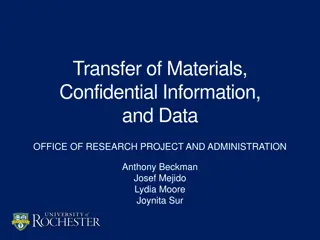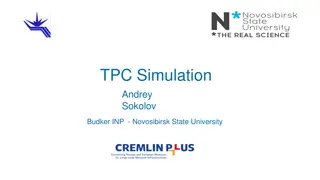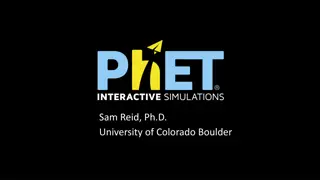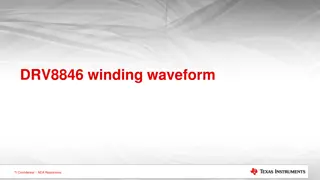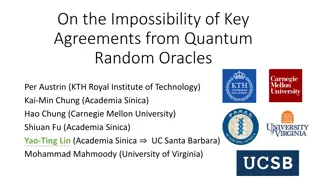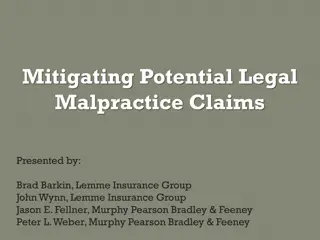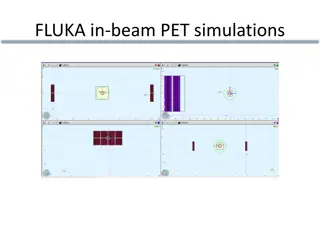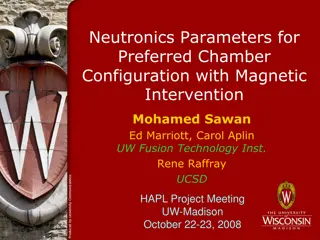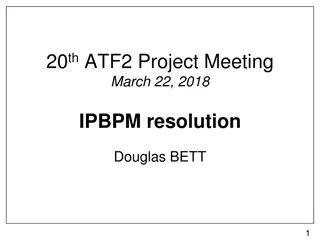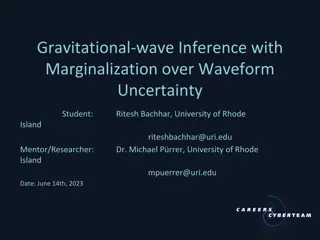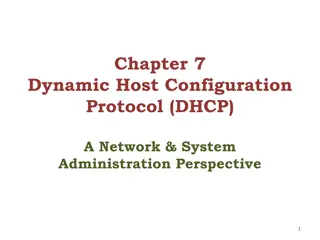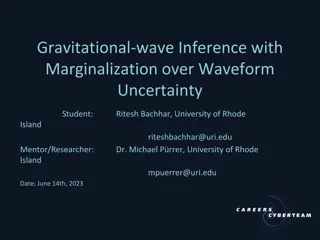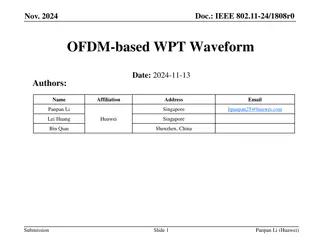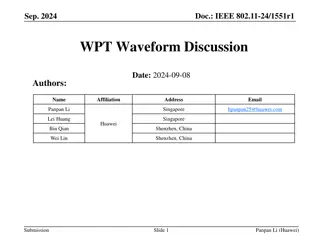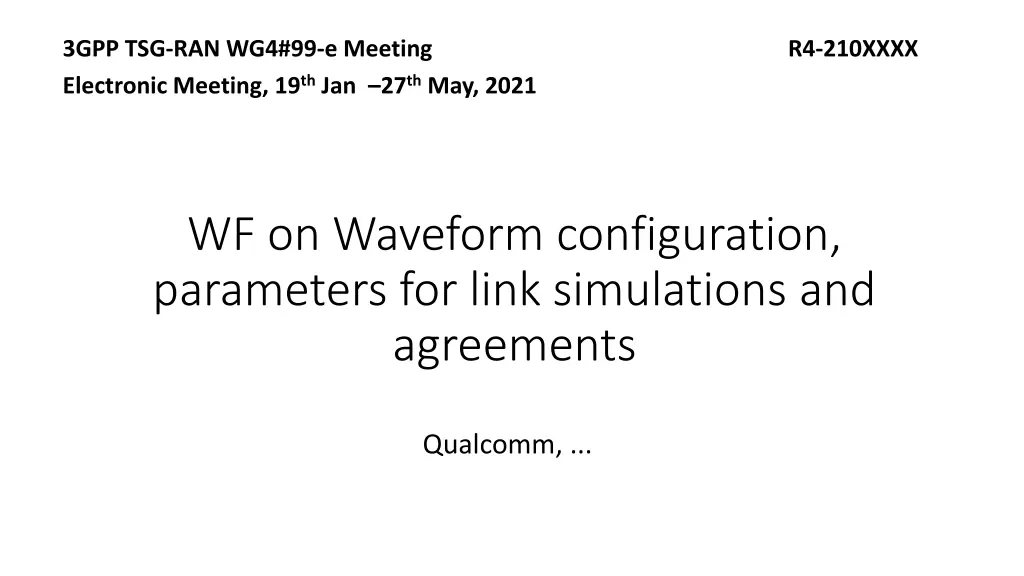
Waveform Configuration and Link Simulations for 3GPP TSG-RAN Working Group Meeting
Explore waveform configuration and link simulation parameters discussed at the 3GPP TSG-RAN WG4#99-e meeting, focusing on increasing UL power using shaped pi/2 BPSK waveforms. Key topics include waveform parameters, PA configuration, target output power, and EVM equalizer spectral flatness for comparative analysis across companies.
Download Presentation

Please find below an Image/Link to download the presentation.
The content on the website is provided AS IS for your information and personal use only. It may not be sold, licensed, or shared on other websites without obtaining consent from the author. If you encounter any issues during the download, it is possible that the publisher has removed the file from their server.
You are allowed to download the files provided on this website for personal or commercial use, subject to the condition that they are used lawfully. All files are the property of their respective owners.
The content on the website is provided AS IS for your information and personal use only. It may not be sold, licensed, or shared on other websites without obtaining consent from the author.
E N D
Presentation Transcript
3GPP TSG-RAN WG4#99-e Meeting R4-210XXXX Electronic Meeting, 19th Jan 27th May, 2021 WF on Waveform configuration, parameters for link simulations and agreements Qualcomm, ...
Background In RAN#91-e a new SID was approved to investigate ways to increase the UL power using shaped pi/2 BPSK waveforms [1]. To obtain results that can be compared across companies there should be general agreement on things such as waveform configuration, link simulation parameters, PA configuration, target output power and EVM equalizer spectral flatness
Issue 1-1-1: Waveform configuration R4-2109749 and R4-2109371 submitted to RAN4#99-e presented waveform parameters that can be used to analyze candidate PAs . Recommended parameter list in table 1 is derived by merging tables from contributions referenced above Recommended WF based on company inputs Use parameter list given in table1 Table 1: Recommended Parameter list Parameter Value Pulse shaping filter Filter configuration conforms to 38.101-1 Rel- 16 Waveform DFTS OFDM with pi/2 BPSK with Rel-16 DMRS Full sweep of all possible combinations of RB starting locations and RB lengths 2 PRB/LCRB # of DMRS symbols/slot # of data symbols/slot 12 BW [10, 15, 20, 30, 40, 50, 60, 80, 90, 100] MHz SCS [15, 30, 60] kHz 30 kHz mandatory 15, 50 kHz optional
Issue 1-2-1 Pulse shaping filter characteristics Comments from 1st round can be grouped into options as follows: Companies that wanted to use 2 tap filter as per 38.101-1, section 6.4.2.4.1 (IITH, IITM, CEWIT, Reliance Jio, Tejas Networks) Companies that wanted to use 2 & 3 tap filters as per 38.101-1, section 6.4.2.4.1 (QCOM, Nokia) Companies that wanted to use general filters defined as per 38.101-1, section 6.4.2.4.1 (Huawei, Nokia) Recommended WF based on company comments Initial study to focus on filter configurations defined as per 38.101-1, section 6.4.2.4.1 Interested companies do subsequent studies which focus on other filter configurations
1-3-1 Parameters for Link simulations Table 2: Recommended Parameter list Parameter Value R4-2109749 and R4-2109371 submitted to RAN4#99-e presented link level simulation parameters that can be used to evaluate candidate filters . Recommended parameter list in table 1 is derived by merging tables from contributions referenced above Pulse shaping filter Filter configuration conforms to 38.101-1 Channel model TDL-C300ns, TDL-A30, TDL-D30 MCS Code rate 0 1/8, 1/4, 1/3, 1/2, 2/3 Waveform DFTS OFDM with pi/2 BPSK filtered by same filter as for Rel-16 DMRS 2 Recommended WF based on company inputs Use parameter list given in table1 # of DMRS symbols/slot # of data symbols/slot 12 # of RBs 2, 4, 6, 8, 10 [2, 4, 8, 16, 64] 1TX/4RX TX/RX configuration BW 100 MHz UE speed 3 km/h SCS 30 kHz HARQ configuration No retransmissions
1-4-1 Target output power Comments from 1st round can be grouped as follows: Companies that wanted to limit study to PC2 (Huawei) Companies that wanted to make study of PC2 mandatory and higher powers optional (Nokia) Companies that wanted to study PC2 first and then discuss higher powers (Apple) Companies that wanted to study higher output powers up to 32 dBm (QCOM, IITH, IITM, CEWIT, Reliance Jio, Tejas Networks) Options 1. Start study with PC2 and re-evaluate higher output power targets later 2. Study output power up to 32 dBm 3. Each company picks between options 1 & 2 Recommended WF based on company inputs Initial study to focus on PC2 performance Interested companies can subsequently study higher output powers
1-4-2 PA architecture Comments from 1st round can be grouped as follows: Study only 1 PA designs (Huawei, Nokia, Apple) Study multi-PA designs after evaluating single PA designs (Apple) Study 1 PA and multi-PA designs (QCOM, IITH, IITM, CEWIT, Reliance Jio, Tejas Networks) Options 1. Study only 1 PA designs 2. Study multi-PA designs 3. Each company picks between options 1 & 2 Recommended WF based on company inputs All companies to initially study 1 PA designs Interested companies can subsequently study multi-PA designs
1-5-1 EVM equalizer spectral requirements No change required per agreement on 1-2-1 For initial studies where filters conforming to 38.101-1, section 6.4.2.4.1 are analyzed current EVM equalizer spectral requirements remain unchanged Subsequent studies using other filter configurations modifications to EVM equalizer spectral requirements can be considered
References [1] RP-210910, New SID: Optimizations of pi/2 BPSK uplink power in NR, RAN#91e, Mar. 2021

